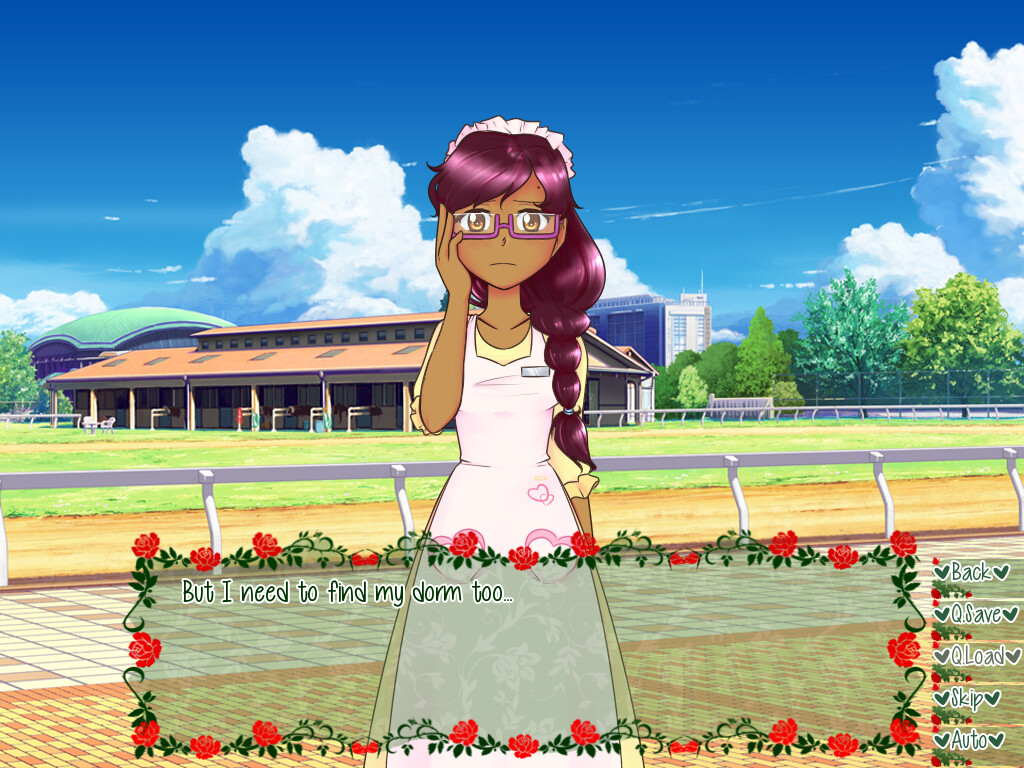

For example, many visual novels, including non-romance games, divide storylines into specific paths based on specific girl characters, a remnant of galgame conventions. This special relationship between the two genres caused the two genres to adopt conventions that significantly feature elements of the other. The vast majority of visual novels are galgames, and almost all galgames are visual novels.

Galgames are a distinctively Japanese genre of video games that focus on attractive girls drawn in anime and manga art styles the genre is related to the Eroge and Romance Game (and its related Dating Sim) genres. Bishoujo games), an aesthetic-based genre. Though "visual novel" is a presentation-style-based genre, they have an overwhelming overlap with Galgames (a.k.a. In this sense, they can be seen as a digital evolution of Gamebooks (think CYOA). Many visual novels feature non-linear Story Branching plots with Multiple Endings and often a Choice-and-Consequence System. Related to the novel game genre defined above, Kinetic Novels are visual novels with no gameplay and no branching stories.Īs a presentation format-based genre, the stories presented in visual novels can be extremely diverse. Nine Hours, Nine Persons, Nine Doors) due to the particular way Japanese adventure games evolved, most Japanese adventure games use VN presentation. Adventure Games (ADV), which contain puzzles or other forms of gameplay, but not to such a level where the VN presentation becomes sidelined (e.g.Novel Games (NVL) note Archaically known as "Sound Novels", which are "VN proper" containing little to no gameplay other than reading and decision-making (e.g.In Japan, games that would be classified as VNs (due to VN presentation) are typically identified as one of the following: Though the genre originated from Japan, the term itself is a western invention.
#Blossoming love visual nove tv#
TV Tropes generally applies the Visual Novel Database 's ruleset to distinguish VNs the key elements to VNDB's classification are a dominant focus on VN-presented storytelling, as well as the use of "novel narrative", defined as the work primarily using written descriptions (as opposed to visuals or gameplay) to present the narrative. However, many works considered "visual novels" do in fact contain gameplay, and the actual line separating "visual novels with a bit of gameplay" and "adventure game with VN presentation" is blurry. VNs are conventionally understood as being exclusively focused on presenting a narrative with VN presentation, with little to no actual gameplay. Other multimedia features, such as animation, music, or voice acting are common in VNs, though they're not key components of the VN presentation. Special story graphics (sometimes called "Game CG"), used situationally to present story events in a more detailed manner.Static character and background graphics, presenting the story's characters and environment.Click-through text boxes, presenting the written portion of the story, that the player must click to progress through (as if they are flipping pages on a book).The core features of VN presentation include the following:

"Visual Novel" is a type of interactive media, typically (if controversially) considered a genre of Video Games and a subgenre of Adventure Games it is alternatively considered a type of medium itself, for those who do not consider them to be video games.Īs a genre, "visual novel" is not defined by a mechanic or an aesthetic, but rather a distinctive presentation: VNs focus on presenting a text-based story using click-through text boxes, accompanied with static character graphics, and usually feature little to no actual gameplay.


 0 kommentar(er)
0 kommentar(er)
